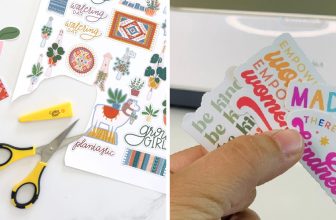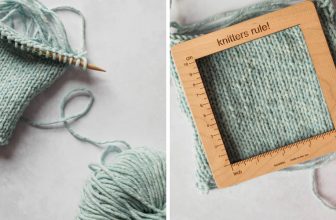How to Cast on Mid Row
Casting on mid-row is a valuable technique in knitting that allows you to add stitches seamlessly within an ongoing project. This method opens up a world of possibilities, especially in scenarios such as adding sleeves to a sweater or creating buttonholes in a design. Mastering how to cast on mid row is essential for knitters seeking to enhance their projects with intricate details or adjustments. Whether you need to expand a pattern or customize your garment, understanding this technique will significantly improve your knitting versatility.

Materials and Tools Needed
To cast on mid-row successfully, you’ll need a few essential materials and tools. Start with a pair of knitting needles that match your chosen yarn, which is crucial for maintaining consistent tension and stitch size. Select your yarn based on your project specifications and pattern instructions for guidance. The required tools include stitch markers to keep track of your progress and a tapestry needle to finish off. Optional tools that can further assist you are a row counter for tracking rows and a gauge ruler to ensure your stitches are even.
Understanding the Need for Mid-Row Casting On
Mid-row casting is essential in various situations where adjustments are required in a knitting project. For instance, when adapting patterns, such as adding sleeves to a sweater or creating buttonholes, knitters can incorporate new stitches without disrupting the overall design. Unlike traditional casting on, where stitches are added at the beginning of a piece, mid-row casting on allows for seamless integration within the existing fabric. This method requires precise execution to avoid gaps and maintain pattern integrity. Mastering how to cast on mid row significantly benefits advanced knitting projects, offering flexibility in design and the ability to modify garments according to personal preferences.
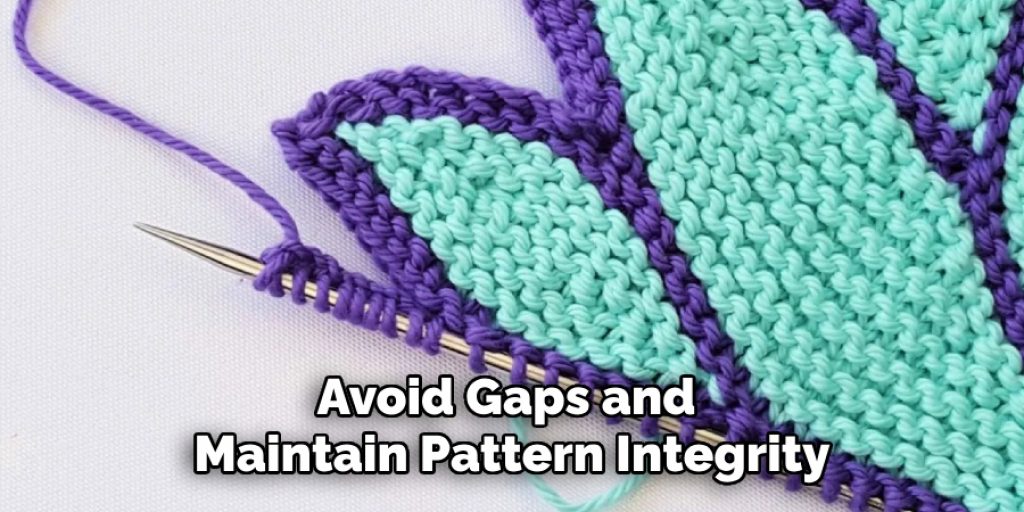
How to Cast on Mid Row: Basic Techniques for Mid-Row Casting On
Using the Long-Tail Method
To cast on using the long-tail method mid-row, estimate the length of yarn needed for the new stitches, then create a slipknot on your needle. Hold the working and tail yarn in your left hand, using your thumb and index finger to create a loop. Insert your needle into the loop from beneath, wrap the working yarn around the needle, and pull it through to create a new stitch. This technique offers ease and quick execution but can be challenging to maintain an even tension, particularly in the middle of a project. Practice controlling yarn tension as you work to achieve a consistent edge appearance.
Using the Cable Cast-On Method
The cable cast-on method is another effective technique for mid-row stitching. Start by inserting the needle into the first stitch on the left needle and wrap the yarn around it. Pull the wrapped yarn through the stitch to create a new stitch on the right needle. Repeat this process until the desired number of stitches is added. One notable advantage of the cable cast-on is its sturdy edge, which helps future rows align seamlessly. For smooth integration, ensure that each new stitch matches the tension of existing stitches, promoting a uniform appearance throughout your project.
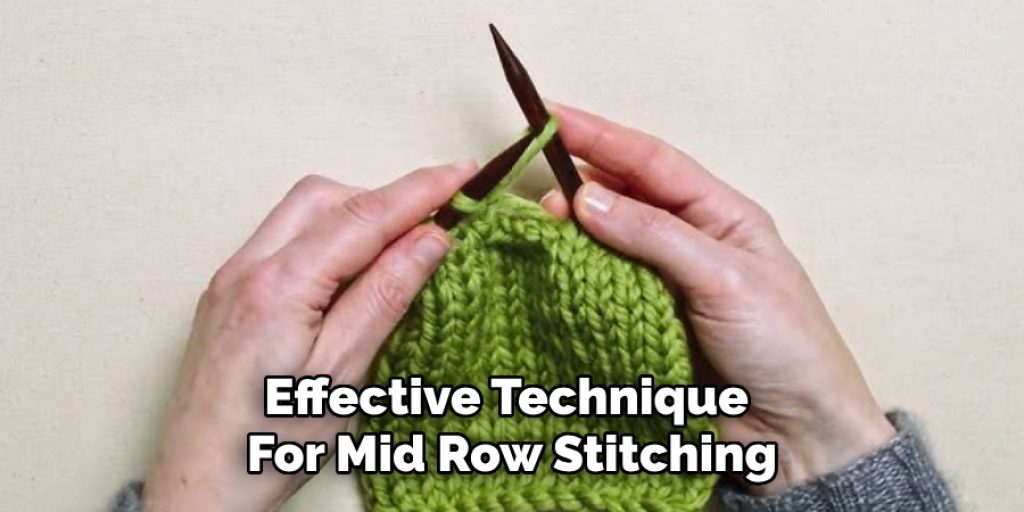
Integrating New Stitches into the Project
Maintaining Pattern Consistency
When integrating new stitches into an existing project, it is crucial to ensure that they align with the established pattern. Carefully review the original pattern for intricate designs such as lace or cables to identify repeat sequences. This will help place new stitches that harmonize visually and structurally with the surrounding work. Consider using stitch markers to delineate pattern repeats as you work, providing a clear reference point. Additionally, if the pattern contains distinctive stitch elements, maintain the same tension and yarn-over technique to ensure the new stitches blend seamlessly into the overall fabric. Consistency in stitch size and spacing is vital in preserving the aesthetic integrity of the project.
Avoiding Gaps and Holes
Preventing gaps where new stitches are added requires attention and technique. Make sure to pull the working yarn taut when you cast on mid-row, which will help close any gaps. If you find gaps occur, consider using your fingers to gently tug the stitches into place after casting on. Another effective method is to tighten the first stitch of the new row, ensuring it sits snugly against the existing stitches. These techniques will help maintain a clean, polished look throughout your project.
Troubleshooting Common Issues
Uneven Edges
Uneven edges can arise when casting on mid-row, often caused by inconsistent tension or misalignment of new stitches. To prevent this, always ensure that you are using the same tension as in the previous rows. If unevenness occurs, identify the specific stitches that are causing the issue and gently pull on the adjacent stitches to create a more even edge. Re-evaluating your technique and ensuring consistent yarn tension will also help to eliminate this issue going forward.
Tension Problems
Tension issues with new stitches can hinder the overall appearance of your project. To diagnose these issues, assess how the new stitches compare to the existing ones. If they appear too tight or loose, adjusting your grip on the yarn or your casting technique may be necessary. Practicing your cast-on methods and adjusting the tightness of your stitches can help maintain consistent tension across the entire piece, ensuring a uniform finish.
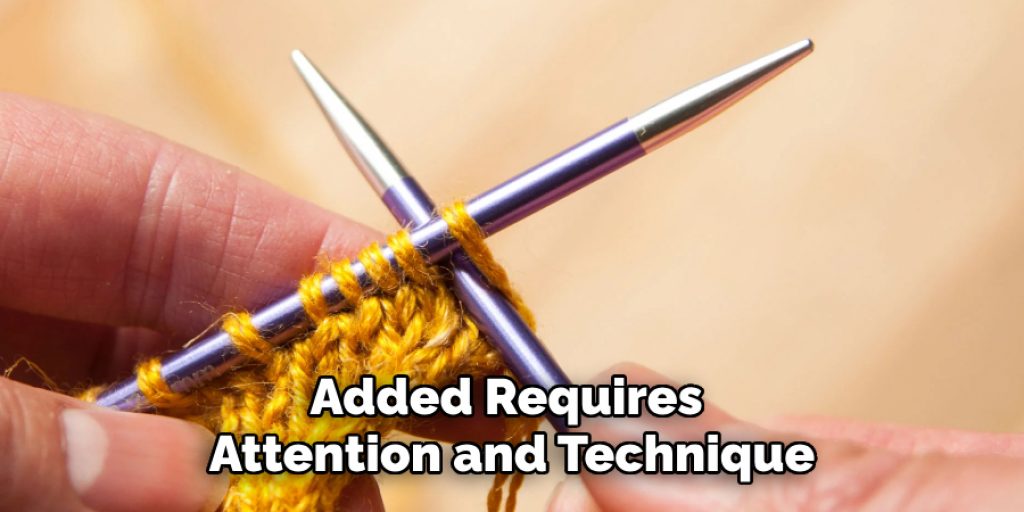
Practical Examples and Projects
Adding Sleeves to a Sweater
Adding sleeves to a sweater can significantly enhance its design and functionality. To cast on mid-row for sleeves, first, identify the point in your project that requires the new stitches. Begin by using the long-tail casting-on method: estimate the length of yarn needed for the new stitches and create a slipknot on your needle. Insert your needle into the next stitch on your working row, then wrap the working yarn around the needle to create a new stitch. Ensure that the tension of these new stitches matches that of the existing sweater body. For seamless integration, regularly check that your new sleeve stitches align with the body’s pattern and are consistent in size.
Creating Buttonholes
Creating buttonholes is another practical application of mid-row casting. You’ll want to plan their placement carefully to cast on mid-row for buttonholes. Depending on your pattern, select the row where the buttonholes will be created and decide on the required spacing—typically, one stitch will be cast on for a standard buttonhole. Again, using the cable cast-on method ensures a sturdy edge. As you work, be mindful of how the buttonholes align with the adjoining stitches, adjusting as necessary to maintain a cohesive look. Properly integrating the buttonholes into your design will enhance both function and aesthetics.
Some Common Mistakes
Ignoring Yarn Weight
One common mistake when integrating new stitches is neglecting to consider the weight and type of yarn used in the existing project. Different yarns have varying thicknesses, textures, and stretch capabilities, which can lead to discrepancies in stitch size and overall appearance. Always ensure that the new yarn closely matches the original yarn in weight and texture to maintain a consistent look.
Inconsistent Tension
Another frequent error is failing to maintain consistent tension throughout the project. Inconsistent tension can create visible discrepancies in the fabric, rendering some areas tighter or looser than others. To ensure uniformity, regularly check your grip on the yarn and how it is being fed into the stitches. If you notice any irregularities, take a moment to adjust your technique before proceeding.
Overlooking Pattern Details
Lastly, when adding new stitches, many knitters overlook specific pattern details, such as cables or lace repeats. Failing to refer back to the original pattern can lead to misalignment or disrupted sequences, detracting from the overall design. Always keep the pattern close at hand and periodically check that new stitches align properly with the established motif.
Frequently Asked Questions (FAQs)
What Is the Best Method for Casting on Mid-Row?
Both the long-tail and cable cast-on methods are highly effective for mid-row stitching. The choice depends on your personal preference and the specific requirements of your project. The long-tail method is quick and versatile, while the cable cast-on creates a sturdier edge.
How Can I Avoid Gaps when Integrating New Stitches?
To prevent gaps, ensure that you pull the working yarn taut during the cast-on process. If gaps do occur, you can adjust the stitches gently with your fingers or tighten the first stitch of the new row to ensure it sits snugly against the existing stitches.
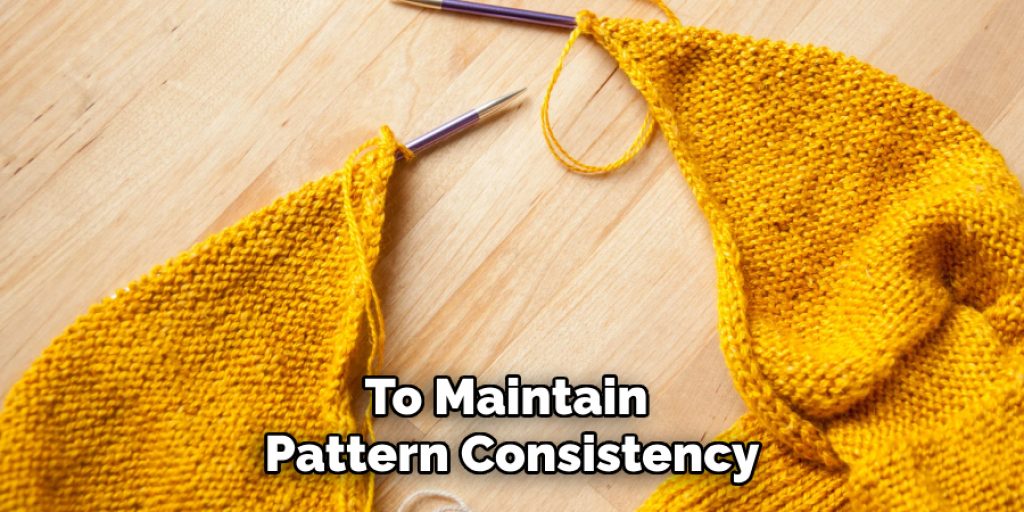
What Should I Do if My Edges Are Uneven After Casting On?
If you notice uneven edges, first check your tension. Make sure you are casting with the same tension as in previous rows. If necessary, identify specific stitches that are out of place and gently manipulate the adjacent stitches to create a more even edge.
How Can I Maintain Pattern Consistency When Adding New Stitches?
To maintain pattern consistency, carefully review your original pattern to identify repeat sequences. Use stitch markers to help delineate these repeats as you work, and ensure that you keep the same tension and technique for distinctive stitch elements.
Is There a Specific Way to Create Buttonholes Using the Mid-Row Cast-On Method?
Yes, when creating buttonholes, plan their placement and select the appropriate row for integration. Use the cable cast-on method to ensure the edges are sturdy, and monitor the alignment of buttonholes with adjacent stitches for a cohesive look.
Conclusion
In summary, mastering how to cast on mid row opens a wealth of possibilities for your knitting projects. Applying the techniques discussed, such as adding sleeves or creating buttonholes, gives you the flexibility to modify and enhance your designs seamlessly. Practicing these methods regularly is essential, as consistent application will improve your overall knitting skills. Embrace the challenges and enjoy experimenting with different techniques; the benefits of mastering mid-row casting enrich advanced projects, making your knitting journey even more fulfilling.



